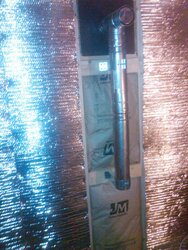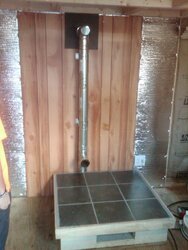Maybe this has been mentioned before, but...
While I was searching for options to finish my basement, I had a contractor stop by to talk about IR reflective insulation. It turns out it's not the best option for what I want to do (mostly because he only sells his stuff installed... $$$), but here is a similar product that might be just the ticket for basement burners who don't care to finish their basement but want to keep the heat in.
It is a low emissivity (only .03 compared to .95 for most common materials) thin roll product that works by reflecting the radiant heat back into the room. Kinda like two giant space blankets with large-cell foam sandwiched in between the layers. Provides heat loss reduction that is equivalent to R-15 (R-7 in horizontal applications) and comes in 175' rolls x 4' wide (700 sq.ft.) for $225 (.32/sq.ft.)
http://www.insulation4less.com/Insulation4lessProduct-1-Prodex-Total-48-Inch.aspx#fragment2
They also carry a cheaper product that provides up to R-14 (R-6 in horizontal applications). It has a bubble wrap type inner layer and comes in 125' rolls x 4' wide (500 sq.ft.) for $99. (.20/sq.ft.)
http://www.insulation4less.com/Insu...ective-4-ft-x-125-ft-500-sq-ft.aspx#fragment2
Either one is a lot cheaper than 1 1/2" extruded polystyrene panels that provide R-7.5 insulation (about .75- $1.00 sq.ft.)
BTW if you are going to finish over this stuff you need at least a 1" space between the surface and the back of the interior wall since this product works by reflecting IR radiation rather than by inhibiting conductive heat loss. By using this as a vapor barrier over the concrete walls and installing a 2x4 conventional glass-insulated wall an inch away from it, you could get a total of about R-20 in the walls of the basement with a Class 1 vapor barrier as an added feature.
While I was searching for options to finish my basement, I had a contractor stop by to talk about IR reflective insulation. It turns out it's not the best option for what I want to do (mostly because he only sells his stuff installed... $$$), but here is a similar product that might be just the ticket for basement burners who don't care to finish their basement but want to keep the heat in.
It is a low emissivity (only .03 compared to .95 for most common materials) thin roll product that works by reflecting the radiant heat back into the room. Kinda like two giant space blankets with large-cell foam sandwiched in between the layers. Provides heat loss reduction that is equivalent to R-15 (R-7 in horizontal applications) and comes in 175' rolls x 4' wide (700 sq.ft.) for $225 (.32/sq.ft.)
http://www.insulation4less.com/Insulation4lessProduct-1-Prodex-Total-48-Inch.aspx#fragment2
They also carry a cheaper product that provides up to R-14 (R-6 in horizontal applications). It has a bubble wrap type inner layer and comes in 125' rolls x 4' wide (500 sq.ft.) for $99. (.20/sq.ft.)
http://www.insulation4less.com/Insu...ective-4-ft-x-125-ft-500-sq-ft.aspx#fragment2
Either one is a lot cheaper than 1 1/2" extruded polystyrene panels that provide R-7.5 insulation (about .75- $1.00 sq.ft.)
BTW if you are going to finish over this stuff you need at least a 1" space between the surface and the back of the interior wall since this product works by reflecting IR radiation rather than by inhibiting conductive heat loss. By using this as a vapor barrier over the concrete walls and installing a 2x4 conventional glass-insulated wall an inch away from it, you could get a total of about R-20 in the walls of the basement with a Class 1 vapor barrier as an added feature.




